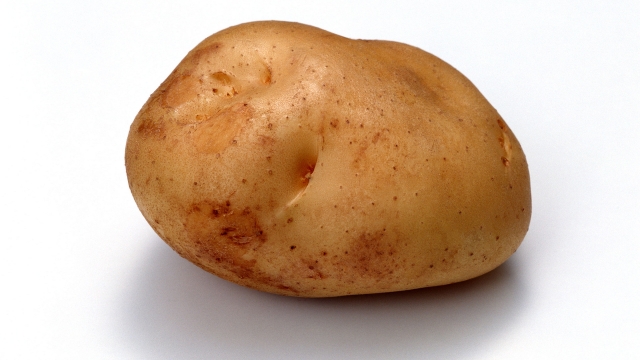From Spuds to Success: Unleashing the Secrets of Potato Planting
Potato Planting: Unleashing the Secrets of Growing Perfect Spuds
Have you ever wondered how to grow your own delicious, homegrown potatoes? Look no further! In this article, we will dive into the captivating world of potato planting and unearth the secrets to a bountiful harvest. Whether you have a vast garden or just a small patch of soil, harnessing these tips and tricks will set you on the path to potato-growing success.
Potatoes, also known as spuds, are one of the world’s most versatile and beloved vegetables. From crispy French fries to creamy mashed potatoes, they never fail to delight our taste buds. However, the journey from spuds to success begins long before they reach our plates. Understanding the art of potato planting is essential to achieve those perfectly textured, flavorful potatoes we all adore.
When it comes to potato planting, there are various techniques and practices to consider. One of the key aspects is choosing the ideal companion plants to maximize growth and ward off pests. By selecting the right companions, we can create a harmonious environment that encourages healthy potato plants and protects them from unwanted invaders.
So, buckle up and get ready to explore the fascinating world of potato planting. By the end of this article, you’ll be armed with the knowledge and confidence to transform your garden into a flourishing haven for the humble potato. Let’s dig in and discover the secrets that lie beneath the soil!
Choosing the Right Potato Varieties
When it comes to potato planting, selecting the right potato varieties is crucial for a successful harvest. The wide range of potato types available can sometimes be overwhelming, but understanding the different characteristics of each variety can help you make an informed decision.
-
Maincrop Potatoes: Maincrop potatoes are ideal for those looking to store their harvest for an extended period. These varieties have a longer growing season and produce larger tubers, making them perfect for storing throughout the winter months. Some popular maincrop potato varieties include King Edward, Maris Piper, and Desiree.

-
Early Potatoes: If you’re eager to enjoy a quick potato harvest, early potatoes are the way to go. These varieties have a shorter growing season and produce smaller, tender tubers that are perfect for boiling or steaming. A few well-known early potato varieties include Yukon Gold, Charlotte, and Swift.
-
Specialty Potatoes: For those looking for a unique twist in their potato garden, specialty potato varieties offer a range of flavors, colors, and textures. Blue potatoes, such as All Blue or Purple Majesty, add a vibrant pop to any dish, while fingerling potatoes, like Russian Banana or French Fingerling, bring a delicate, elongated shape. Exploring specialty potatoes can add excitement to your culinary adventures.
Remember that climate and soil conditions should also be taken into consideration when choosing potato varieties. Some varieties thrive in cooler climates while others prefer warmer regions. Additionally, certain potato varieties may be more resistant to pests or diseases, making them a better choice for organic or low-maintenance gardens.
By carefully selecting the right potato varieties for your planting, you set yourself up for a successful and satisfying potato-growing experience.
Optimal Planting Techniques
Planting potatoes requires careful consideration of several factors to ensure successful growth and a bountiful harvest. Here are three key techniques to optimize your potato planting process.
-
Site Selection:
Potato Companion Plants
Choosing the right location is crucial for potato planting. Look for a site that receives at least six hours of sunlight each day and has well-draining soil. Avoid areas prone to waterlogging, as excessive moisture can lead to rot and disease. Additionally, select a spot with good air circulation to prevent the buildup of humidity, which can foster fungal growth. -
Soil Preparation:
Preparing the soil properly sets the foundation for successful potato planting. Begin by removing any existing weeds or grass, as they can compete with the potatoes for nutrients and water. Break up clumps of soil and remove rocks or debris that could hinder tuber development. Incorporate organic matter, such as compost or well-rotted manure, into the soil to improve its structure and fertility. Aim for a pH level of around 5.5 to 6.5, as potatoes thrive in slightly acidic soil. -
Companion Planting:
Companion plants can play a beneficial role in potato cultivation by warding off pests and improving overall plant health. Consider planting companion plants such as marigold, horseradish, or basil alongside your potatoes. Marigolds emit a scent that repels many pests, while horseradish acts as a natural deterrent for potato bugs. Basil, on the other hand, enhances the flavor of potatoes and attracts beneficial insects. These companion plants can help create a balanced and thriving ecosystem in your potato patch.
By implementing these optimal planting techniques, you can maximize the success and productivity of your potato crop. Remember to regularly monitor your plants for any signs of pests or diseases and take appropriate measures to protect your precious spuds.
Companion Plants for Healthy Potato Growth
Growing potatoes can be even more successful when paired with the right companion plants. These plants not only enhance the growth of potatoes but also provide benefits such as pest control and improved soil fertility. Here are three recommended companion plants to consider for healthier potato crops:
-
Marigolds: Marigolds are excellent companion plants for potatoes. Their bright, vibrant flowers not only add aesthetic appeal to your garden but also serve as natural pest repellents. These flowers release a strong aroma that deters common potato pests like nematodes, aphids, and beetles. Planting marigolds near your potato crop can help protect it from these unwanted visitors.
-
Beans: Beans and potatoes make a great gardening duo as they complement each other’s growth. Potatoes provide a shade cover for the beans, helping them thrive during hot summer months. In return, beans work as nitrogen-fixing plants, enriching the soil with this essential nutrient. The symbiotic relationship between potatoes and beans results in healthier potato plants with increased yield.
-
Horseradish: Horseradish is a versatile companion plant for potatoes. This herb acts as a natural insect repellent, keeping pests like Colorado potato beetles at bay. Additionally, horseradish acts as a trap crop, diverting pests from attacking the potato plants. Its deep root system also helps improve soil structure and nutrient absorption, benefiting nearby potato plants.
By incorporating these companion plants into your potato planting strategy, you can foster a more robust and thriving potato crop. Take advantage of the benefits they offer, from pest control to enhanced soil fertility, and unlock the secrets to successful potato planting.


